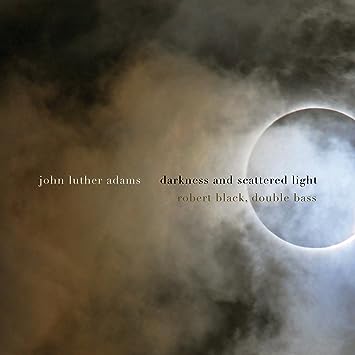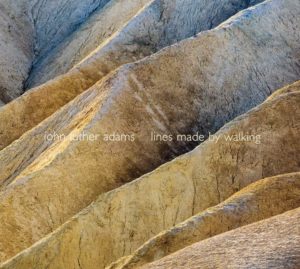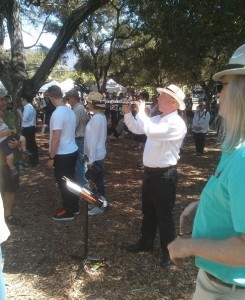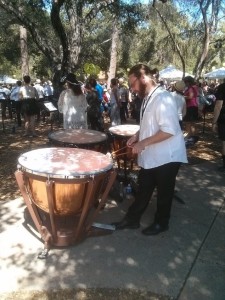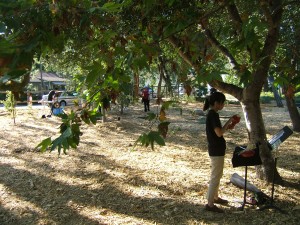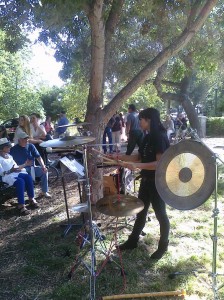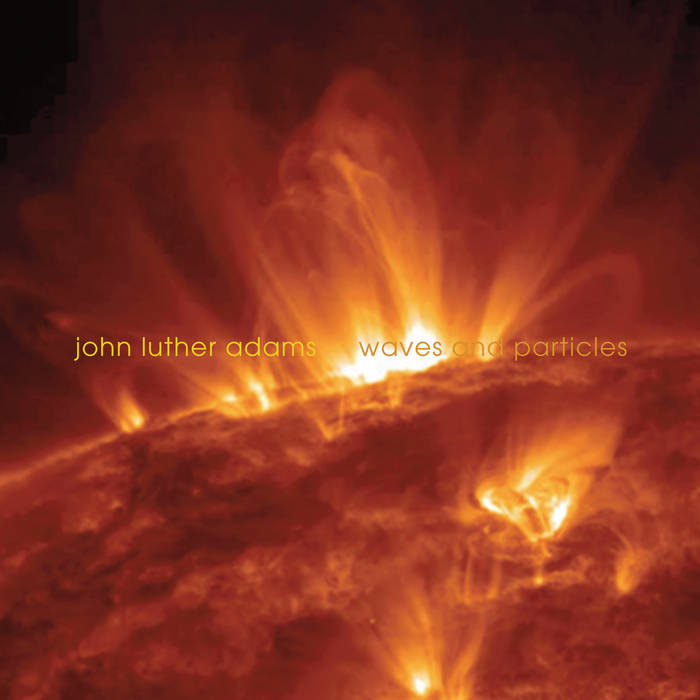
Cold Blue Music has released Waves and Particles, a new CD by John Luther Adams featuring the JACK Quartet. This new album by the Pulitzer Prize-winning Adams explores the deeper levels of elemental nature through extraordinary musical expression. The composer writes: “Waves and Particles was inspired by quantum physics, fractal geometry, and noise – which function as elemental metaphors in my music.” This is realized by the renowned JACK Quartet who artfully extract new and exceptional sounds from the standard string quartet. This new album follows three previous CDs by Adams, released by the Cold Blue label and recorded by the JACK Quartet.
Particle dust, track 1, opens with a rapidly repeating tutti phrase that carries a strong sense of power and motion. The dense texture and churning sound is reminiscent of Steve Reich’s classic Different Trains. The music is dominated by this texture and surges forward without melody or counterpoint like a swirling cloud of particles. Pauses occur, filled with softly ethereal sustaining tones that break up the hard driving tutti sections. The texture alternately thins and swells depending on various combinations of string parts. At 4:20 a few seconds of silence is heard followed by a series of delicate sustained tones, as if the piece is gathering its breath. The fast growling in the cello returns as the other parts enter, building the intensity. The playing by JACK is rapid but always under control. Particle dust is engaging without convention and compelling in its purpose.
Spectral waves follows and, by contrast to the first track, begins with a lush sustained chord that slowly increases in volume. The smooth tones gradually change in color and evoke a warm, welcoming feeling. Introspective and nostalgic, never fast or flashy, spectral waves shares the same gentle sensibility as heard in The Wind in High Places and other John Luther Adams string pieces. The parts blend well together and the result is a soothing bath of beautiful sounds. Velocity waves, track 3, returns to the rapid and rugged textures of particle dust. The fast chugging sounds in the cello are offset by slowing notes in the higher registers. The tempo gradually slows as the dynamics decrease. The phrasing surges and swells, only to fall back again in a repeating pattern. These cycles seem to vary in pitch, velocity, acceleration and deceleration. At 4:20 the sounds turn languid and soft for a short stretch, but soon recover their previous energy. At times, the tempo in the lower strings is slowing while that in the violins is increasing – and then they reverse. The final dash to the finish in the lower strings perfectly captures the concept of a velocity wave. The unexpected charm of velocity waves is the direct result of the precise and disciplined playing by the JACK Quartet.
Tridac waves, track 4, is next and opens with low sounds, increasing in volume and pitch, then reversing. The effect is like that of a sluggish siren but with an urgent and immediate unease. These siren-like sounds proceed in layers and in different registers. This pattern continuously repeats, but splits between the parts; some times the higher registers dominate while at other times the lower strings lead. Tridac waves is full of unusual and alarming sounds, skillfully conjured from conventional string instruments.
Murmurs in a chromatic field, track 5, features a series of scary sustained tremolos that immediately produce a dark, spooky feeling. The tones and timbre are unusual for strings and might well have been electronically synthesized. As the piece proceeds, the sounds and pitches become more alien and spacey. Some conventional chords are heard from time to time, giving the rest of the piece some harmonic context. Brief silences appear between the longer stretches of sound, and this adds to the sense of mystery. More pauses follow, in a similar pattern and the silences get longer towards the fading finish. Murmurs in a chromatic field is an apt title for this piece – it is quietly intimate and beautifully performed.
Particles rising is the final track on the album and opens with short bursts of four delicate violin notes. This is followed by a pause, then repeated several times. The second violin joins in with same rhythm, and in harmony. The viola and cello enter, in turn, until all four parts are engaged in sustained tones and a lovely warm harmonic wash. Fast skittering notes in the upper voices are heard, culminating in a strong and continuous fiddling in all four parts. The lower strings soon dominate with a strong dynamic and a full, growling texture. Short stretches of quiet sustained tones in harmony punctuate the harsher sounds, offering the listener a fine contrast. All of this is played with skillful ensemble despite the absence of a leading melody or strong pulse. Particles rising is a muscular piece appropriate to a strong physical phenomenon, but never overwhelming or alien in character.
This album is full of remarkable sounds that the composer extracts from the conventional string quartet. Quantum physics, fractal geometry, and noise are part of the natural world, yet we know of them only abstractly by scientific observation and measurement using complicated machines. Can these phenomena be treated in the same way as mountains, forests, rivers and oceans? The music in this album, although often powerful, is never distant or intimidating. Rather it shares the same welcoming warmth of other string quartets by Adams, inspired by the conventional natural world. Waves and Particles makes a strong case that we need to embrace the totality of nature, even down to its elemental particles.
The JACK Quartet is:
Christopher Otto, violin
Austin Wulliman, violin
John Richards, viola
Jay Campbell, cello
Waves and particles is available directly from Cold Blue Music and from US retailers by Naxos and other music outlets.
